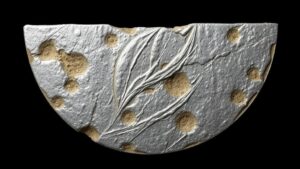Searching for submerged settlements along the Mediterranean coast, lost during sea level changes.
Searching for Submerged Settlements along the Mediterranean Coast
The Mediterranean Sea, renowned for its deep blue waters and historical significance, holds remnants of ancient civilizations submerged beneath its waves. As sea levels have fluctuated over millennia, many settlements have been lost to the depths. The ongoing search for these submerged sites not only enriches our understanding of human history but also helps address questions surrounding climate change and its implications for coastal communities.
The Historical Context of Sea Level Changes
Throughout history, the Mediterranean has experienced significant sea level changes, driven primarily by natural climate variations and glacial periods. For example, during the Last Glacial Maximum around 20,000 years ago, sea levels were approximately 120 meters lower than today. As the climate warmed, large ice sheets melted, causing dramatic shifts in sea levels, which led to the drowning of numerous coastal settlements.
One notable example is the ancient town of Heracleion, once a thriving port city at the Nile Delta. This city was submerged around the 8th century A.D. due to rising sea levels and tectonic activity, only to be rediscovered in 2000 by marine archaeologist Franck Goddio.
Modern Techniques in Underwater Archaeology
The discovery and study of submerged settlements are entirely different from conventional archaeological methods. Modern underwater archaeology employs advanced technologies such as:
- Sonar Mapping: This technology allows archaeologists to create detailed maps of the seafloor, identifying potential sites for excavation.
- Remote Operated Vehicles (ROVs): Equipped with cameras and tools, ROVs provide a closer look at underwater structures without the need for divers.
- Submersibles: These can carry researchers deep into the ocean while providing a controlled environment for exploration.
For example, off the coast of the island of Phalasarna in Crete, sonar mapping has revealed the outlines of ancient structures that suggest a vibrant trade hub existed long before its eventual submersion.
Notable Submerged Settlements
Several submerged settlements have been identified across the Mediterranean, each providing unique insights into ancient lifestyles:
- Cleopatras Palace, Alexandria: Once a magnificent complex, the palace succumbed to a series of earthquakes and sea-level rise around 1,500 years ago. Excavations have recovered statues and artifacts, highlighting its opulence.
- Baiae, Italy: This famous Roman resort town became submerged after tectonic shifts and has preserved intricate mosaics and luxurious villas, revealing the decadence of Roman leisure.
- Portus, Italy: The ancient port of Rome, once a bustling hub of trade, is now under water. Its remains provide critical insights into the Roman Empire’s maritime activities.
The Importance of These Discoveries
The study of submerged settlements serves multiple purposes:
- Enhancing historical knowledge about ancient cultures and their connections.
- Informing current discussions on climate adaptation strategies in coastal regions, which are increasingly threatened by rising sea levels.
- Providing a platform for interdisciplinary research, combining archaeology, marine biology, and climate science.
For example, research at the submerged remains of the Roman city of Ostia has revealed data that helps model how ancient societies adapted to changing environments, offering lessons for contemporary societies facing similar challenges.
Addressing Challenges and Concerns
Despite the advancements in technology and methodology, underwater archaeology is fraught with challenges. The preservation of artifacts is paramount, as many are easily damaged by seawater and marine organisms. Also, increasing tourism and illicit salvage operations pose significant risks to these submerged sites.
To combat these threats, collaborations between governments, local communities, and academic institutions are essential. Awareness campaigns that highlight the cultural significance of underwater heritage can foster community stewardship and create a collective responsibility to protect these sites.
Conclusion and Actionable Takeaways
As the Mediterranean continues to yield its submerged secrets, the synthesis of historical knowledge and modern technology offers unprecedented opportunities for exploration and learning. For enthusiasts or individuals interested in this field, actionable steps include:
- Engaging with local archaeological societies to support preservation efforts.
- Staying informed about ongoing research projects and their findings.
- Participating in volunteer programs that focus on marine conservation and heritage protection.
Understanding the past can inform the future. Whether through academic pursuits or local conservation efforts, the search for submerged settlements reflects a broader narrative about humanitys enduring relationship with the sea and the lessons that lie beneath its surface.



